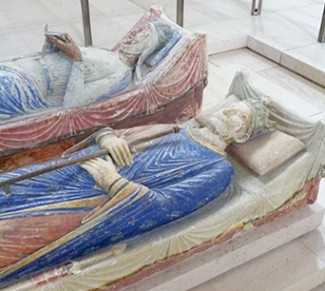Christmas and New Year were two occasions when medieval people felt they could and should celebrate. In medieval England, people from all walks of life recognised the importance of Christmas and celebrated it in their own way.
A simple pottage recipe with the addition of extra herbs and some meat along with some homemade medieval bread was the kind of ‘treat’ that the poorer people of England enjoyed on Christmas Day. At the other end of the scale, there were lavish celebrations held by the wealthy – landowners, lords and royal households. A castle’s great hall would be decked with holly and colourful banners and large tables laid out with a carefully selected seating plan and special goblets for the guests. The menu of a Christmas Day feast at a medieval castle or other royal household was magnificent – what we would call ‘over the top’ in modern day language! Read about one such feast comprising 6 courses in my medieval castle feast special feature.
One interesting fact about Christmas in medieval England is how Christmas itself figured in key dates of the country’s history. Here are three key figures and their connections with Christmas in the context of medieval England.
William The Conqueror
After his invasion of southern England in October 1066, he was officially crowned King of England on 25 December 1066.
Henry II
William’s great grandson Henry II, the first undisputed English king since Harold II, repeated history when he was crowned King Of England at Christmas 1154.
John I
Henry’s youngest son, John was born to Henry’s wife and Queen Eleanor of Aquitaine on Christmas Eve 1166 – exactly 100 years after his great, great grandfather William The Conqueror’s coronation in Westminster Abbey.

